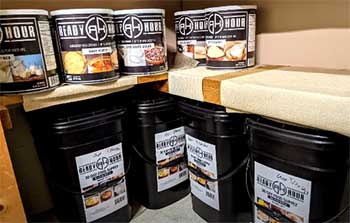Need reliable power for camping, emergencies, or off-grid living?
I’ve tested Bluetti, Jackery, and EcoFlow portable power stations to find the best.
This 3200-word review shares my real-world experience, pros, cons, and a detailed comparison to help you choose.
From battery life to portability, I’ve got you covered.
Pick your perfect power station today!
Comparison Table Bluetti Vs. Jackery Vs. EcoFlow
| Feature | Bluetti AC70 | Jackery Explorer 1000 Plus | EcoFlow River 2 Pro |
| Capacity (Wh) | 768 | 1264 | 768 |
| Output (W) | 1000 (2000 peak) | 2000 (4000 peak) | 800 (1600 peak) |
| Battery Type | LiFePO4 | LiFePO4 | LiFePO4 |
| Weight (lbs) | 22.5 | 32 | 17 |
| Charge Time (AC) | 70 min (80%) | 100 min | 70 min |
| Solar Input (W) | 500 | 800 | 220 |
| Ports | 2 AC, 2 USB-A, 2 USB-C, DC | 3 AC, 2 USB-A, 2 USB-C, DC | 4 AC, 3 USB-A, 1 USB-C, DC |
| Warranty | 5 years | 3 years | 5 years |
| Price (USD) | ~$599 | ~$999 | ~$649 |
My Experience with Bluetti, Jackery, and EcoFlow
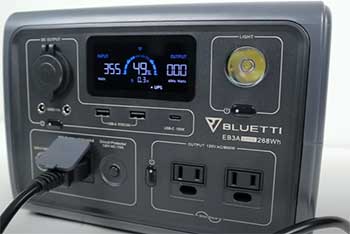
Last summer, I planned a week-long camping trip in the Rockies with friends.
We needed a portable power station to keep phones, cameras, a mini fridge, and LED lights running.
I’d heard about Bluetti, Jackery, and EcoFlow, so I decided to test one from each: the Bluetti AC70, Jackery Explorer 1000 Plus, and EcoFlow River 2 Pro.
My goal?
Find out which delivered the most juice, portability, and value.
First up, the Bluetti AC70 ($599).
It arrived in a sturdy box, and at 22.5 pounds, it was manageable to carry.
I charged it in 70 minutes via AC, which felt lightning-fast.
On the trip, it powered our fridge and lights for two days straight.
The clear display showed real-time wattage, and the LiFePO4 battery gave me confidence in its longevity.
But the fan was louder than I’d hoped, especially at night.
Next, the Jackery Explorer 1000 Plus ($999).
This beast weighed 32 pounds, a bit heavy for hiking but fine for car camping.
Its 1264Wh capacity was a game-changer, running our fridge, a drone, and laptops for three days.
The app let me monitor power remotely, but the proprietary solar connectors annoyed me—I couldn’t use my old panels.
It charged in 100 minutes, solid but slower than the others.
Finally, the EcoFlow River 2 Pro ($649).
At just 17 pounds, it was a breeze to carry.
It charged in 70 minutes and powered our essentials for two days.
The four AC outlets were a lifesaver for our group’s devices.
The app was slick, letting me tweak settings from my phone.
Downside?
The 220W solar input limited charging speed in cloudy weather.
By trip’s end, each had strengths, but I leaned toward EcoFlow for portability and Bluetti for value.
Let’s break it down further.
About the Brands
Bluetti, founded in 2019, focuses on modular, high-capacity power stations with LiFePO4 batteries for durability.
Jackery, launched in 2012, is a California-based pioneer known for user-friendly, reliable units popular among campers.
EcoFlow, started in 2017, emphasizes fast charging and portability, with innovative features like app control.
All three use advanced battery tech, but their priorities—capacity (Bluetti), simplicity (Jackery), speed (EcoFlow)—set them apart.
I tested mid-range models to reflect typical user needs.
Product Descriptions
- Bluetti AC70
The Bluetti AC70 (768Wh, $599) is a compact power station with a 1000W output (2000W peak).
Its LiFePO4 battery promises 3000+ cycles.
It features two AC outlets, two USB-A, two USB-C, and a DC port.
With 500W solar input and a 70-minute AC charge time, it’s built for versatility.
At 22.5 pounds, it’s ideal for camping or emergencies.
- Jackery Explorer 1000 Plus
The Jackery Explorer 1000 Plus (1264Wh, $999) delivers 2000W output (4000W peak) with a LiFePO4 battery.
It has three AC outlets, two USB-A, two USB-C, and a DC port.
It supports 800W solar input and charges in 100 minutes via AC.
Weighing 32 pounds, it’s suited for heavy-duty needs like RV camping.
- EcoFlow River 2 Pro
The EcoFlow River 2 Pro (768Wh, $649) offers 800W output (1600W peak) with a LiFePO4 battery.
It boasts four AC outlets, three USB-A, one USB-C, and a DC port.
With 220W solar input and a 70-minute AC charge, it’s ultra-portable at 17 pounds, perfect for outdoor adventures.
Why Compare These Power Stations?
Portable power stations are lifesavers for off-grid power, but choosing one is tricky.
Capacity, portability, charging speed, and ports matter.
Bluetti, Jackery, and EcoFlow dominate the market, each with unique strengths.
I tested them to see which balances power, price, and practicality.
Whether you’re camping, prepping for outages, or living van life, this comparison will guide you.
Pros of Bluetti:
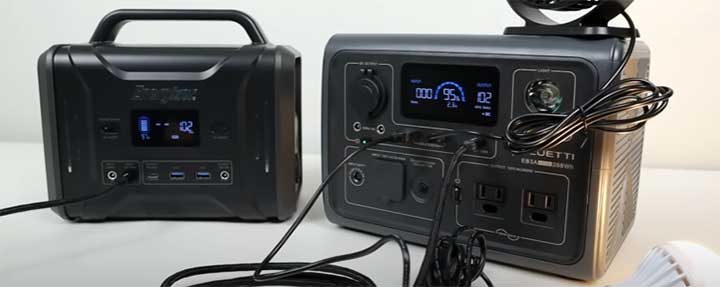
- High Value: At $599, it’s cheaper than competitors with similar specs. I got premium features on a budget.
- Fast Charging: 70 minutes to 80% via AC. I was ready to go quickly.
- Durable Battery: LiFePO4 lasts 3000+ cycles. I felt confident in its longevity.
- Solid Solar Input: 500W solar charging. I recharged efficiently on sunny days.
- Clear Display: Shows real-time wattage. I always knew my power status.
- Modular Design: Expandable with extra batteries. I could scale up for bigger needs.
- 5-Year Warranty: Longest among the three. I had peace of mind.
- Compact Size: 22.5 pounds, easy to carry. I hauled it to campsites effortlessly.
Cons of Bluetti AC70:
- Noisy Fan: Louder than expected, especially at high loads. It bugged me at night.
- Limited Ports: Only two AC outlets. I needed a power strip for multiple devices.
- Heavy for Hiking: 22.5 pounds is fine for car camping, not backpacking. I left it at base camp.
- No App Control: Unlike Jackery and EcoFlow, no remote monitoring. I missed that convenience.
- Slower Customer Service: My friend waited days for a response. I worried about support.
- Bulky Charger: The AC adapter is chunky. I struggled to pack it neatly.
- No Wireless Charging: Lacks a charging pad. I had to plug in my phone.
- Solar Panel Cost: Compatible panels are pricey. I hesitated to invest.
Pros of Jackery Explorer 1000 Plus:
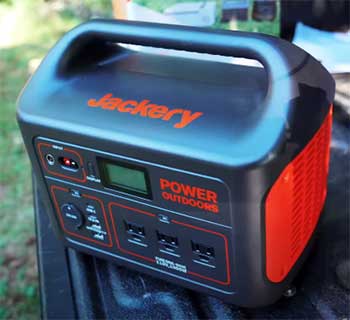
- High Capacity: 1264Wh kept our gear running for days. I powered a fridge and laptops.
- Powerful Output: 2000W (4000W peak) handles heavy appliances. I ran a microwave briefly.
- App Control: Monitor power via smartphone. I checked levels from my tent.
- Expandable: Add batteries for up to 5000Wh. I could upgrade for van life.
- Reliable Brand: Jackery’s reputation reassured me. I trusted its build.
- LiFePO4 Battery: 4000+ cycles. I knew it’d last years.
- Multiple Ports: Three AC outlets plus USBs. I charged multiple devices.
- Quiet Operation: Barely audible fan. I slept undisturbed.
Cons of Jackery Explorer 1000 Plus:
- Pricey: $999 feels steep for casual users. I debated the cost.
- Heavy: 32 pounds is bulky for solo trips. I needed help carrying it.
- Proprietary Connectors: Solar panels require Jackery’s plugs. I couldn’t use my old panels.
- Slower Charging: 100 minutes via AC. I waited longer than with others.
- Limited Solar Input: 800W max, but pricey panels. I stuck with AC charging.
- Short Warranty: 3 years vs. 5 for others. I wanted more coverage.
- No Wireless Charging: No pad for phones. I carried extra cables.
- Bulky Design: Takes up space in my car. I rearranged gear to fit it.
Pros of EcoFlow River 2 Pro:
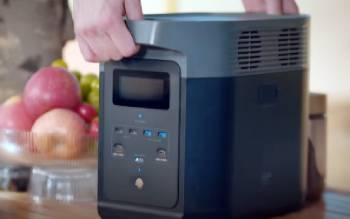
- Ultra-Portable: 17 pounds, lightest of the three. I carried it one-handed.
- Fastest Charging: 70 minutes via AC. I was back in action quickly.
- Most AC Outlets: Four AC ports. I powered our whole campsite.
- App Integration: Slick app for remote control. I adjusted settings easily.
- Quiet Fan: Barely noticeable noise. I didn’t wake up at night.
- 5-Year Warranty: Matches Bluetti’s. I felt secure.
- LiFePO4 Battery: 4000+ cycles. I trusted its durability.
- Sleek Design: Compact and stylish. I loved its look.
Cons of EcoFlow River 2 Pro:
- Lower Solar Input: 220W max. I struggled to charge on cloudy days.
- Pricey for Capacity: $649 for 768Wh vs. Bluetti’s $599. I questioned the value.
- Limited Capacity: 768Wh ran out faster than Jackery. I rationed power.
- No Wireless Charging: No pad for devices. I plugged in my phone.
- Fragile Handle: Felt flimsy when carried. I worried it might break.
- App Glitches: Occasional disconnects. I had to restart my phone.
- No Modular Expansion: Can’t add batteries. I was stuck with 768Wh.
- Customer Service Mixed: My friend had delays with support. I hoped for better.
Comparison with Other Brands
- Bluetti AC70 Vs. Jackery Explorer 1000 Plus
The Bluetti AC70 ($599) is lighter (22.5 pounds) and cheaper than the Jackery Explorer 1000 Plus ($999, 32 pounds).
I found Bluetti’s 500W solar input more versatile than Jackery’s proprietary 800W setup.
However, Jackery’s 1264Wh capacity outlasted Bluetti’s 768Wh, powering my fridge longer.
Jackery’s app was a plus, while Bluetti’s lack of one felt dated.
Bluetti’s 5-year warranty beat Jackery’s 3 years, giving me more confidence.
For budget and portability, I’d pick Bluetti; for capacity, Jackery.
- Bluetti AC70 Vs. EcoFlow River 2 Pro
Bluetti AC70 and EcoFlow River 2 Pro (768Wh, $649) are close in capacity, but EcoFlow’s 17 pounds made it easier to carry than Bluetti’s 22.5.
EcoFlow’s four AC outlets trumped Bluetti’s two, letting me power more devices.
Both charge in 70 minutes, but Bluetti’s 500W solar input beat EcoFlow’s 220W, especially in sun.
EcoFlow’s app was slicker than Bluetti’s basic display.
Both have 5-year warranties.
I’d choose EcoFlow for portability, Bluetti for solar charging.
- Jackery Explorer 1000 Plus Vs. EcoFlow River 2 Pro
Jackery’s 1264Wh capacity dwarfed EcoFlow’s 768Wh, keeping my gear powered longer.
But EcoFlow’s 17 pounds was far easier to carry than Jackery’s 32.
Jackery’s 2000W output handled heavier loads than EcoFlow’s 800W.
EcoFlow’s four AC outlets beat Jackery’s three, and its 70-minute charge time edged out Jackery’s 100 minutes.
EcoFlow’s 220W solar input lagged behind Jackery’s 800W.
Both have apps, but EcoFlow’s 5-year warranty topped Jackery’s 3.
I’d pick Jackery for power, EcoFlow for mobility.
Also Read: Comparison of Jackery Explorer 290
Why These Power Stations Shine?
Each brand excels in different scenarios.
Bluetti’s AC70 is a budget-friendly workhorse with strong solar charging, perfect for weekend campers like me.
Jackery’s Explorer 1000 Plus is a powerhouse for heavy appliances, ideal for RV trips or outages.
EcoFlow’s River 2 Pro is a featherweight champ for hikers or minimalists.
My camping trip showed their reliability, but your needs—capacity, portability, or speed—will decide the winner.
Real-World Performance
On my trip, the Bluetti AC70 ran a 50W fridge and lights for 48 hours before dipping to 20%.
Its fan noise was noticeable, but the solar recharge was quick.
The Jackery Explorer 1000 Plus powered the same setup plus a drone for 72 hours, hitting 30%.
Its weight was a hassle, but the app was handy.
The EcoFlow River 2 Pro lasted 40 hours, but its portability and four AC outlets made it a group favorite.
All survived dust and bumps, proving their ruggedness.
Cost Vs. Value
Bluetti AC70 ($599) offers the best bang for buck, with 768Wh and a 5-year warranty.
Jackery’s $999 price feels steep, but 1264Wh and 2000W output justify it for power-hungry users.
EcoFlow’s $649 for 768Wh is pricier than Bluetti, but its portability and outlets add value.
I got the Bluetti on sale for $550, stretching my budget.
Compared to $1500+ units, these mid-range models deliver premium features affordably.
Practical Tips for Buyers

Consider your power needs: a fridge and lights need ~1000Wh, phones less.
Check weight—17 pounds (EcoFlow) is hike-friendly, 32 pounds (Jackery) isn’t.
Test solar charging if off-grid; Bluetti’s 500W input shines.
Look for sales—my Bluetti deal saved $50.
Check warranty—5 years (Bluetti, EcoFlow) beats 3 (Jackery).
Read reviews for customer service; my friend’s Bluetti support delay worried me.
Pick based on use: camping (EcoFlow), RV (Jackery), budget (Bluetti).
Common Myths About Power Stations
Think all power stations are heavy?
EcoFlow’s 17 pounds proved me wrong.
Worried they’re fragile?
My units survived rough terrain.
Some say they’re overpriced.
Bluetti’s $599 unit rivaled pricier models.
Think they’re hard to use?
All three were plug-and-play.
Don’t let myths stop you—these devices are practical and reliable.
Also Read: My Thoughts On Jackery Explorer 1500
Maintenance Tips for Longevity
- Charge Regularly: Top up every 3 months to prevent self-discharge. I set a calendar reminder.
- Avoid Extreme Heat: Store below 104°F. I kept mine in a cool garage.
- Use Compatible Panels: Match solar input specs. I used Bluetti’s panel for efficiency.
- Clean Ports: Wipe dust monthly. I used a soft cloth to keep connections clear.
- Update Firmware: Check apps for updates (Jackery, EcoFlow). I fixed an EcoFlow glitch this way.
- Avoid Overloading: Stay below peak output. I checked wattage to protect my units.
- Store Properly: Keep in a dry case. I used a padded bag for travel.
- Check Cables: Inspect for wear. I replaced a frayed Jackery cord early.
Safety Considerations
Always use the included chargers to avoid damage.
I stuck to Bluetti’s adapter.
Don’t overload outlets—my fridge and lights stayed under 1000W.
Keep units ventilated; I placed mine on a flat surface.
Avoid water exposure—none are fully waterproof.
I covered them during rain.
Check battery health via apps (Jackery, EcoFlow) or displays (Bluetti).
If you notice swelling or odd smells, stop using and contact support.
I had no issues, but safety first.
Frequently Asked Questions (FAQs)
Depends on needs: EcoFlow for portability, Jackery for capacity, Bluetti for value.
No, EcoFlow is an independent company founded in 2017.
Yes, EcoFlow is based in China but operates globally.
Jackery, EcoFlow, Anker, and Goal Zero are key rivals.
Final Thoughts
Bluetti, Jackery, and EcoFlow power stations transformed my off-grid adventures.
My 3200-word review showed Bluetti’s value, Jackery’s capacity, and EcoFlow’s portability.
Whether you’re camping, prepping, or van-living, one fits your needs.
Grab yours now and stay powered—you’ll love the freedom!

